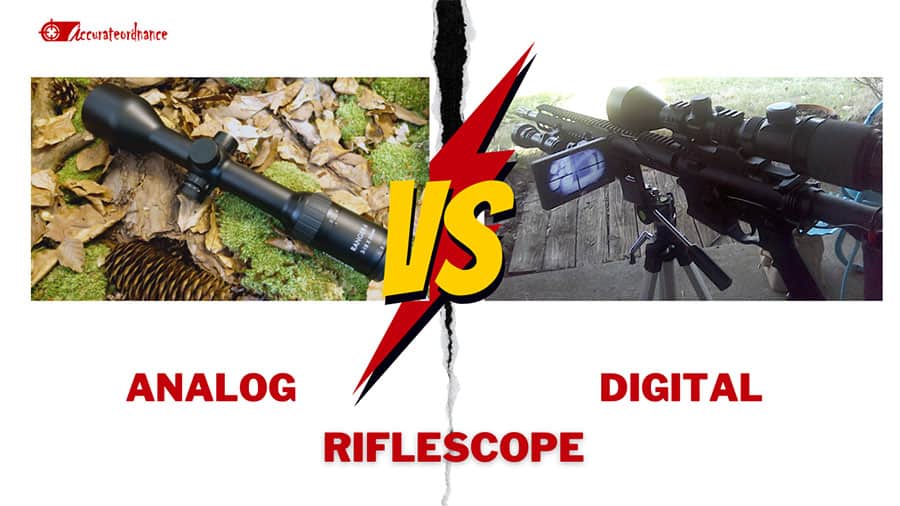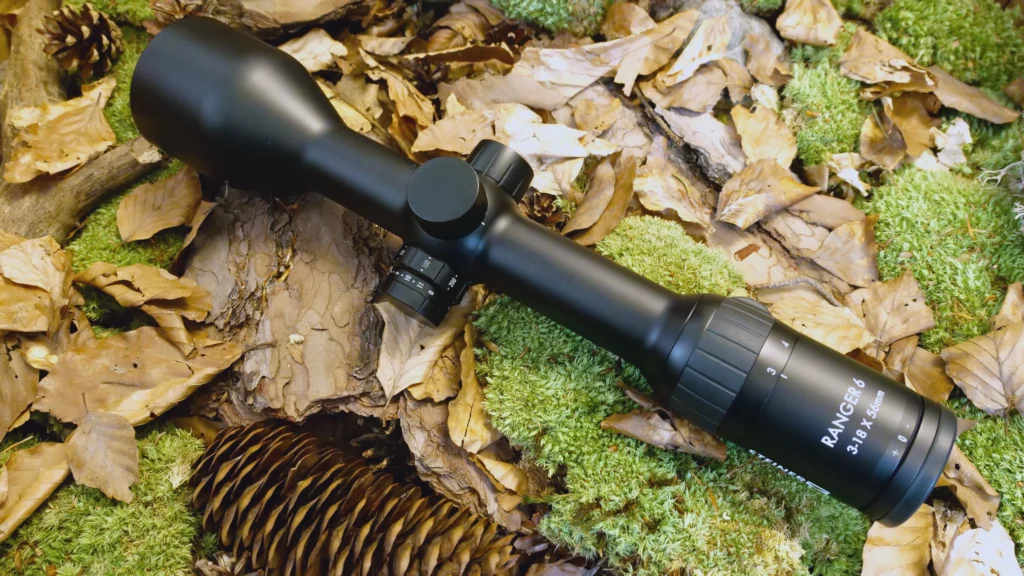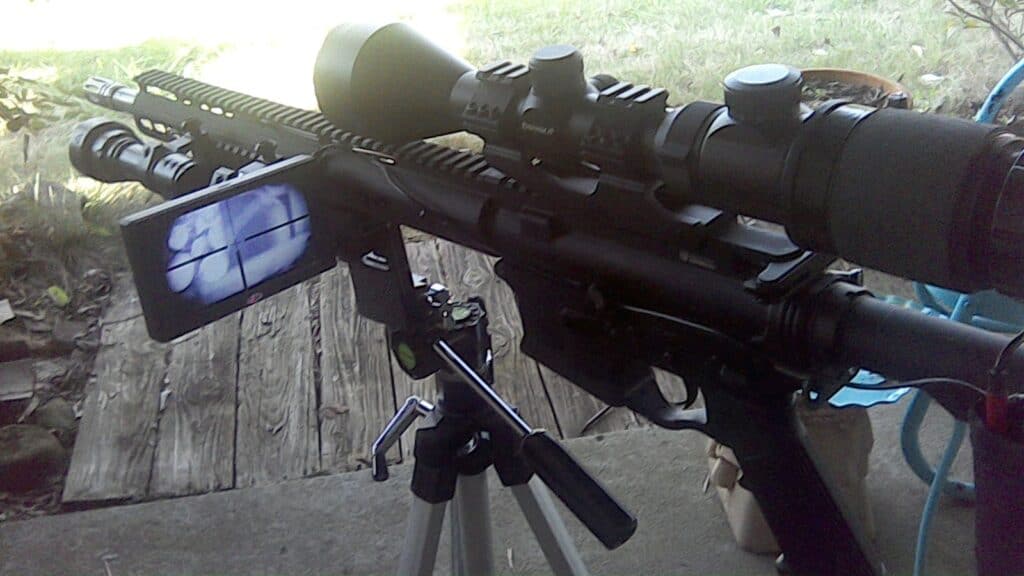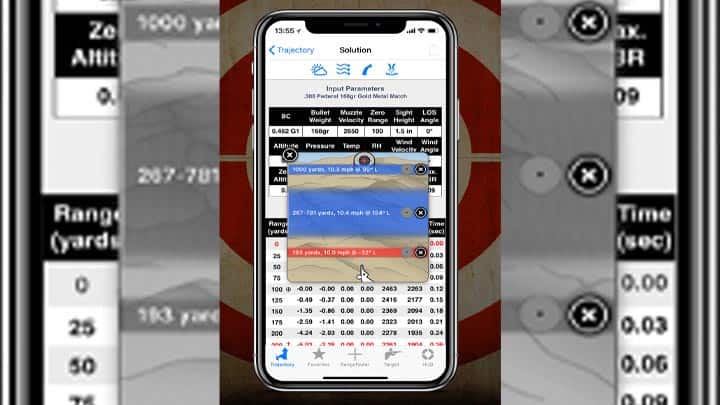Are you ready to aim beyond tradition and go into the dynamic world of shooting optics? The choice between digital and analog riflescopes holds the key to an enhanced shooting experience. So, which path will you take to precision and adaptability?

Riflescopes are fundamental tools in the sport shooting and hunting world. These aiming devices have undergone a transformative evolution, giving rise to two distinct categories: analog and digital riflescopes. Both categories of scopes serve as the eyes of marksmen, facilitating precise target acquisition and accurate shots.
In the pursuit of excellence, enthusiasts and professionals are confronted with the decision between traditional analog scopes and their innovative digital counterparts. This guide will help you in the decision-making process, equipping you with comprehensive insights into the world of riflescope technology.
- Evolution of Riflescope Technology
- Analog Riflescopes
- Pros and Cons of Analog Scopes
- Digital Riflescopes
- Pros and Cons of Digital Riflescopes
- Key Differences Between Digital and Analog Riflescopes
- Factors to Consider When Choosing Between Digital and Analog Riflescopes
- FAQS
- What is the main difference between digital and analog scopes?
- Which type of scope is better for beginners?
- Are digital scopes more accurate than analog scopes?
- Can analog scopes handle higher frequencies than digital scopes?
- Are analog scopes cheaper than digital scopes?
- Which type of scope is more commonly used in professional settings?
Evolution of Riflescope Technology

The history of riflescope technology is really interesting. It shows how people always wanted to be more accurate when shooting. This journey started with a basic magnifying lens on guns, but now it has become advanced and helps shooters with accurate aiming in sports and hunting.
Early Beginnings

Even back in the 1600s, people started putting simple magnifying glasses on guns to help them aim better. These early versions were not very fancy and could only make things look a bit bigger. But they were important because they laid the groundwork for better scopes in the future.
In the 1800s, things got more exciting. Telescopic sights, which are like the modern riflescopes we have now, started showing up. Smart people like Morgan James and John R. Chapman were behind these new ideas. But these early scopes could only make things a little bigger and were quite big themselves compared to what we have today.
Advancements in Optics
In the late 1800s and early 1900s, there were big improvements to how optics work. They used better glass and special coatings on the lenses to make the pictures clearer and enhance light transmission. This made scopes more useful for shooting by giving better views of the targets. During the World Wars, there was a big push to make better scopes for long-range shooting. This led to new scopes that have lit-up lines to help aim in the dark and change zoom through the scope for far targets. These changes laid the foundation for the scopes we have now.
After World War II, riflescope technology underwent a transformative phase, and more scopes were made for civilian use. The impact of military developments spilled over into the shooting community and fostered advancements that pushed riflescopes into a new era of precision and durability. Key improvements included the introduction of features like fog-proofing, waterproofing, and shock resistance. These innovations ensured that riflescopes remained functional and reliable in a variety of challenging environmental conditions.
In the late 1900s, something amazing happened. People could combine regular scopes with technology like phones and computers. This gave birth to digital scopes. They had features like electronic reticles, variable magnification settings, and even integrated ballistic calculators. In the present day, riflescope technology continues its dynamic evolution, constantly pushing boundaries to enhance shooting experiences. Scopes now offer features like night vision capabilities, rangefinders, and connectivity with smartphone shooting apps. This modern landscape empowers shooters with so many tools and options, regardless of whether they opt for the traditional precision of analog or the high-tech innovation of digital riflescopes.
Now, let’s discuss analog and digital scopes in detail.
Analog Riflescopes

Analog riflescopes use a traditional approach to operate the optics, embracing mechanical principles over electronic integration. These scopes offer shooters a straightforward and unembellished view of their target.
The architecture of an analog riflescope revolves around a tube housing a series of lenses. The front lens, known as the objective lens, gathers ambient light and focuses it onto an internal reticle – usually a crosshair pattern. When the shooter peers through the eyepiece situated at the scope’s rear, the magnified image of the target converges with the reticle, facilitating precise aiming. Windage and elevation adjustments are achieved through manual manipulation of the scope’s mechanisms, typically altering the position of the erector tube to shift the reticle’s orientation.
Analog Optics and Their Features
Analog scopes come with different aiming designs, like crosshairs or other shapes, that help you aim accurately. These designs are fixed and can sometimes be changed. But when you magnify the view too much, the sides might look blurry. Also, analog scopes can have difficulty seeing well in the dark because they only use regular glass. Analogs are still liked for being strong, easy to use, and dependable. But new digital scopes are getting attention because they have more special features.
Pros and Cons of Analog Scopes
Pros
Natural Optics: Analog scopes offer a direct and unadulterated view of the target without digital processing. This often results in a more natural and organic sight picture, allowing shooters to perceive details in a way that closely resembles the naked eye.
Reduced Glare and Distortion: Well-designed analog optics can reduce glare and distortion, creating a clear and distortion-free sight picture. This ensures that the reticle and the target are displayed crisply, aiding in accurate shot placement.
Mechanical Simplicity: Analog sights operate on mechanical principles, which often translates to fewer components that can potentially fail. This simplicity contributes to their reliability, making them less susceptible to electronic malfunctions.
Rugged Construction: They are known for their robust build quality and are designed to withstand harsh conditions, including impacts, vibrations, and adverse weather. This durability makes them suitable for outdoor activities and hunting in challenging environments.
Consistency in Transitions: Analog scopes offer consistent image quality during transitions from brighter to slightly dimmer lighting conditions. This ensures that the shooter maintains a stable sight picture even as lighting conditions change.
Manual Control: Analogs provide shooters with a hands-on approach to adjustments. Windage and elevation adjustments are made using physical knobs, allowing for precise control over the point of impact. This direct interaction can be appealing to shooters who prefer a tactile experience.
Zeroing Precision: Manual adjustments in analog scopes can lead to precise zeroing. Once calibrated, the scope’s settings can be reliably maintained, providing consistent accuracy over time.
Affordability: One of the advantages of these scopes is their affordability. Analogs are generally more budget-friendly compared to their digital counterparts. They offer reliable performance without the additional costs associated with electronic components and advanced features. This makes them an attractive option for shooters who are looking for an effective optic without breaking the bank.
Traditional Appeal: Analogs have a traditional and timeless appeal that resonates with many shooters. For those who enjoy a more old-school shooting experience, analog scopes offer a tactile sensation with manual adjustments, providing a connection to the heritage of shooting sports.
Cons
Edge Distortion: Some analog scopes, especially at higher magnification levels, may suffer from optical distortions towards the edges of the field of view. This can result in a phenomenon known as “barrel distortion” or “pincushion distortion,” affecting the accuracy of shots taken near the edges.
Low-Light Performance: Analog scopes might struggle in low-light conditions due to the absence of electronic enhancements like illuminated reticles or night vision capabilities. This limitation can hinder target acquisition and accuracy during dawn, dusk, or heavily shaded environments.
Limited Technological Features: Analog scopes lack advanced technological features that have become standard in digital scopes, such as illuminated reticles, variable magnification, and built-in ballistic calculators. This can limit their adaptability to diverse shooting scenarios.
Manual Adjustments: Analogs require manual adjustments for windage and elevation. While this offers a hands-on shooting experience, it can be time-consuming and may require tools for precise adjustments.
Limited Low-Light Use: Analog optics lack features that enhance low-light performance, which can limit their usability during twilight or when shooting at night, like during coyote hunting.
Tool Dependence: Achieving precise adjustments often requires external tools, which can be inconvenient if adjustments need to be made in the field. Carrying tools for adjustments might be necessary, especially when re-zeroing the scope after changing ammunition or environmental conditions.
Limited Versatility: While traditional and appealing, analogs might struggle to adapt quickly to rapidly changing shooting scenarios. The manual adjustments required for windage, elevation, and magnification might not be as swift or seamless as the electronic adjustments found in digital scopes, especially when responding to fast-moving targets or varying distances.
Digital Riflescopes

Digital scopes are a remarkable evolution in the world of firearm optics. These scopes transcend the boundaries of traditional analog scopes by seamlessly integrating advanced electronic technology into the world of optics. In contrast to their analog predecessors, digital riflescopes achieve a harmonious fusion of optical lenses and electronic components, resulting in a groundbreaking synergy that reshapes shooting experiences. This fusion of optics and electronics is at the forefront of innovation, ushering in a new era of precision, adaptability, and performance for shooters across various conditions. Let’s look at some features;
Electronic Reticles
At the heart of digital riflescopes lies the innovative inclusion of electronic reticles. Rather than being etched onto the physical glass, these reticles are projected onto a digital screen within the scope. This digital presentation enables shooters to tailor their reticle to their specific needs, offering the ability to swiftly switch between various reticle patterns, colors, and even adjust the reticle’s brightness level. This dynamic customization empowers shooters to adapt instantaneously to changing shooting scenarios without the necessity for manual reticle changes.
Low-Light and Night Vision Capabilities

One big benefit of digital riflescopes is how well they work in low-light situations. These scopes use technology to make dim light brighter, letting you shoot even when regular scopes struggle. With features like low-light and night vision abilities, these scopes can help you see in the dark or in difficult lighting conditions. They do this by using natural light or special light that our eyes can’t see. This means you can see things that were hidden in the dark before.
Built-in Rangefinders and Ballistic Calculators
Digital scopes can have special tools like built-in rangefinders and ballistic calculators. Rangefinders use lasers to measure how far targets are, giving you important information for aiming accurately. Ballistic calculators are like smart math machines that consider things like the type of bullet you’re using, how fast it goes, and the environment. They help you figure out how much to aim above or below the target for long shots. These tools are built right into the scope, so you don’t need extra gadgets or do calculations by hand. This makes shooting more accurate and easier.
Smartphone Connectivity and Data Sharing

Digitals can also connect to smartphones using apps or Bluetooth. This means you can exchange data between your scope and your phone. You can adjust settings, see shooting data, and even analyze your shots after firing.
Environmental Sensors
A few digital scopes have special sensors that measure things like how hot or humid it is. These sensors give you real-time data. This data helps you fine-tune your aiming because the environment affects where the bullet goes, especially for long shots.
Custom Profiles and User Profiles
Cool digital optics let you make your own settings. You can save different settings for different things, like the bullets you use or the shooting conditions. You can change these settings quickly depending on what you’re doing. You can also save your favorite settings, like how big the aiming point is or how zoomed in you are.
Pros and Cons of Digital Riflescopes
Pros
Adaptability: Digital riflescopes offer unmatched adaptability due to features like variable magnification settings, electronic reticles, and connectivity options. Shooters can swiftly adjust settings to suit different shooting scenarios, distances, and lighting conditions.
Customization: The ability to customize reticle patterns, colors, and brightness levels empowers shooters to tailor their scopes to their preferences, enhancing accuracy and comfort.
Low-Light Performance: Digital sights excel in low-light conditions, extending shooting opportunities into dawn, dusk, and even darkness.
Continuous Improvement: Digital optics are subject to regular firmware updates and software enhancements, allowing shooters to benefit from the latest technological advancements even after purchase.
Availability of Power Sources: Rechargeable batteries or common battery types are usually compatible, ensuring shooters can find suitable power sources easily.
Cons
Learning Curve: The range of features and customization options might result in a steeper learning curve for some shooters, requiring time to fully understand and utilize all available functions.
Dependence on Electronics: Relying on electronic components means that if the electronics malfunction or the battery depletes, the scope’s advanced features may become inaccessible.
Complexity: Advanced features can sometimes lead to increased complexity, and shooters might need to invest time in effectively understanding and configuring these features.
Battery Dependency: Digital sights require power to function, and shooters need to monitor battery levels to avoid unexpected shutdowns in the field.
Feature Overkill: Shooters who do not require the advanced features offered by digital optics might pay for capabilities they do not fully utilize.
Key Differences Between Digital and Analog Riflescopes
Optical Mechanism
Analogs rely on conventional optical mechanisms. They use lenses and prisms to magnify and transmit light. Digitals merge optics and electronics and feature optical lenses that transmit the image to electronic sensors. This image is then processed and displayed on a digital screen.
Image Processing
The image processing of analogs is confined to the inherent characteristics of the lens system. There is no electronic intervention in the image transmission process. The reticle is physically etched onto the glass and remains fixed. Meanwhile, Digitals introduce advanced image processing capabilities. Images captured by optical lenses are subjected to electronic processing. This processing allows for image enhancement, adjustment of brightness levels, and the ability to display the image in various colors and reticle patterns.
User Interface and Controls
User interaction with analog scopes involves manual adjustments using tactile knobs. The user interface is straightforward but offers limited customization options. Digitals redefine the user interface and controls. They incorporate electronic interfaces with buttons and controls to adjust various settings. The user interface of digital scopes is highly customizable.
Factors to Consider When Choosing Between Digital and Analog Riflescopes
Intended Use (Hunting, Target Shooting, Tactical)
Consider how you primarily plan to use the riflescope. Different scopes cater to specific shooting activities. Analog scopes might be suitable for traditional hunting and target shooting, while digital scopes offer advantages for tactical applications due to their advanced features.
Budget Considerations
Budget plays a significant role in your choice. Analog scopes generally come at a lower cost due to the absence of advanced electronics. Digital scopes offer a range of features, but they tend to be pricier. Determine the features you need and align them with your budget.
Environmental Conditions
Evaluate the environments you’ll be shooting in. If you often engage in low-light conditions or nighttime shooting, a digital scope’s low-light and night vision capabilities could be beneficial. Analogs might suffice for daylight shooting, but digitals shine in challenging lighting scenarios.
Compatibility with Other Equipment (Night Vision Devices, Smartphones)
If you intend to use the riflescope in conjunction with other equipment like night vision devices or smartphones, a digital optic’s compatibility becomes essential. Digital sights with smartphone connectivity and night vision capabilities provide added versatility and functionality.
User Familiarity with Technology
Consider your comfort level with technology. If you’re accustomed to traditional shooting with manual adjustments, analogs might suit you better. However, if you’re tech-savvy and open to learning advanced features, digitals could provide a richer shooting experience.
Comparison Table: Analog Riflescopes vs. Digital Riflescopes
| Features/Attributes | Analog Riflescopes | Digital Riflescopes |
|---|---|---|
| Optical Mechanism | Uses lenses and prisms for magnification and light transmission. | Combines optics and electronics; image captured by lenses is transferred to electronic sensors and displayed digitally. |
| Image Processing | Confined to the lens system; reticle is physically etched onto the glass. | Advanced image processing with capabilities for image enhancement, brightness adjustment, and customizable reticle patterns. |
| User Interface & Controls | Manual adjustments using tactile knobs. | Electronic interfaces with buttons and customizable controls. |
| Low-Light Performance | May struggle in very low-light conditions; limited to ambient light. | Excels with features like enhanced low-light performance, night vision capabilities, and illuminated reticles. |
| Customization & Adjustability | Limited to physical adjustments and fixed reticle patterns. | Wide range of customization, from reticle patterns and colors to brightness levels and electronic enhancements. |
| Budget Considerations | Generally more affordable due to absence of electronics. | Typically pricier because of advanced electronic features and components. |
| Battery Dependency | None, as there are no electronic components. | Requires power for electronic features; dependent on battery life. |
| Durability & Ruggedness | Known for robust build quality and can withstand harsh conditions. | Also durable, but can be more susceptible to electronic malfunctions. |
| Compatibility with Other Devices | Limited to mechanical accessories and adjustments. | Can be compatible with devices like smartphones, night vision equipment, and other digital devices through connectivity features. |
| Learning Curve | Straightforward and intuitive for those familiar with traditional shooting; minimal tech involvement. | Might be steeper due to range of electronic features; requires understanding of both optics and technology components. |
| Environmental Sensors | None. | May have sensors to measure temperature, humidity, etc., providing real-time data to aid in aiming. |
| Connectivity Features | None. | Can connect to smartphones and other devices via apps, Bluetooth, or other wireless technologies, allowing for data sharing and analysis. |
FAQS
What is the main difference between digital and analog scopes?
The biggest difference is how they work. Analog scopes use regular glass to make things look bigger and help you aim. Digital scopes use both glass and electronics. They turn what you see into a picture on a screen.
Which type of scope is better for beginners?
If you’re just starting, analog scopes might be simpler to understand. They have knobs you can turn to change how much you can see and where you’re aiming. Digital scopes have more buttons and features, which can be a bit tricky if you’re new. But if you’re okay with learning, digital scopes have cool things that can help you aim better.
Are digital scopes more accurate than analog scopes?
Both types of scopes can be accurate, but digital scopes have special features that can make aiming easier. They can show you more information and help you adjust for things like how far the target is or the wind. This can make your shots more precise, especially when you’re shooting from far away.
Can analog scopes handle higher frequencies than digital scopes?
Analog and digital scopes work with light and images, not frequencies. Frequencies are more about things like sound and radio waves. So, scopes, whether analog or digital, don’t really deal with frequencies.
Are analog scopes cheaper than digital scopes?
In general, yes, analog scopes tend to be cheaper than digital scopes. Analog scopes use simpler technology, so they usually cost less to make. Digital scopes have more advanced features, which can make them more expensive. But remember, the price can vary based on the brand, features, and quality of the scope.
Which type of scope is more commonly used in professional settings?
Digitals are more commonly used in professional settings nowadays. They offer advanced features like storing data and displaying extra information.

Mike Hardesty is a published freelance gun writer. He also possesses specialized expertise in rifle scopes With dozens of articles and reviews published in Pew Pew Tactical, Snipercountry.com, and TTAG (The Truth About Guns), Mike is considered a firearms expert. His special area of expertise is handguns.
Mike is a long-time shooter. He has been punching paper targets, taking deer and other game and shooting at competitions since about 1975. Other related pursuits include reloading and bullet casting. He currently reloads for over 10 calibers, both handgun and rifle. His reloads, particularly for 9mm, were in great demand during the height of the ammo shortage among family and friends. He donated hundreds of rounds to informal shooting sessions. He was quoted as saying “I do not sell my reloads but I sure will help my guys shoot ’em for free!”. He has a few cherished firearms that he has inherited or otherwise procured — those are his favorites.
He earned B.S. and M.S. degrees from Indiana State University in 1974-1975.
He’s a firearm experts and is the founder of mhardesty.com.
